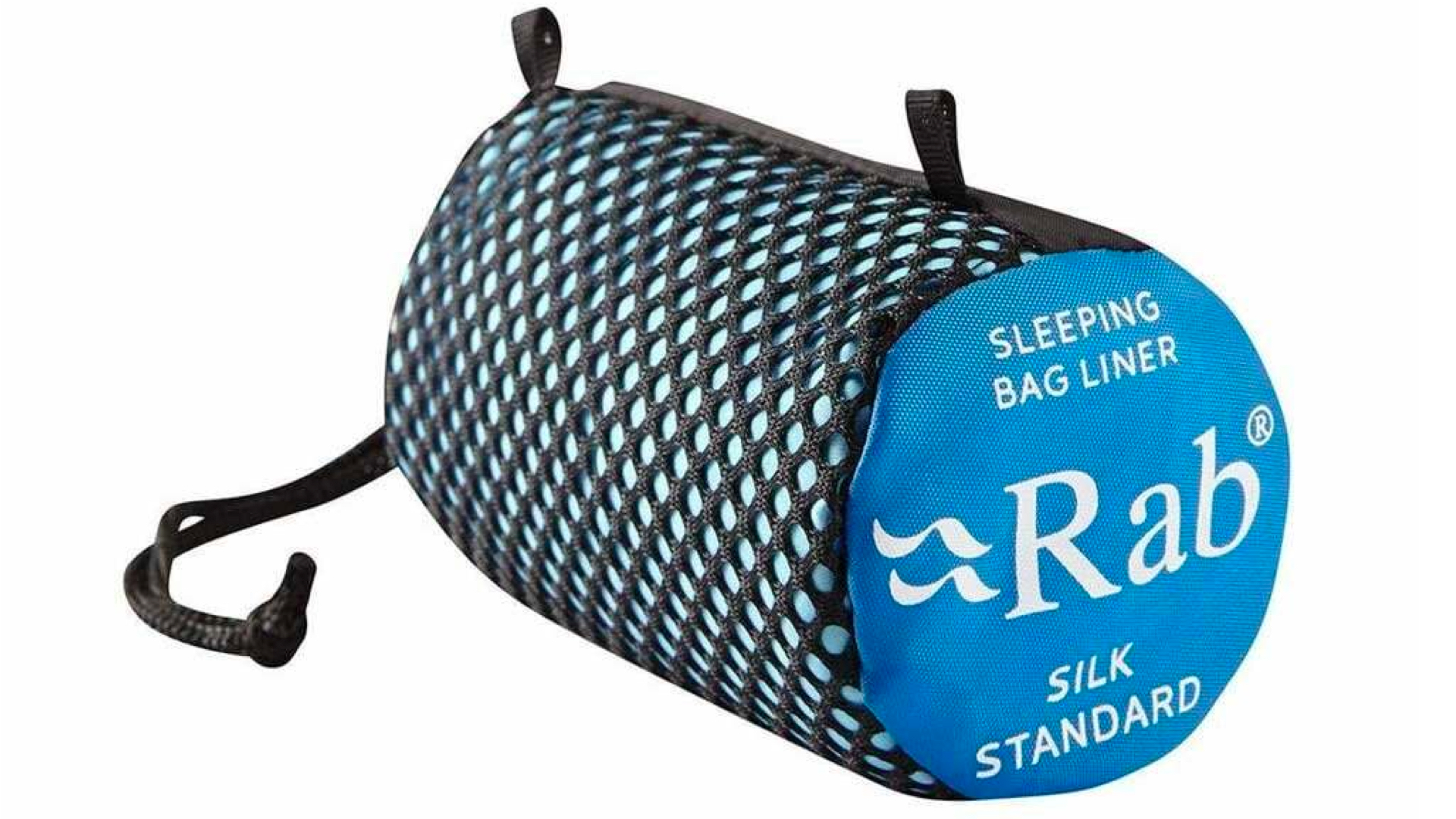Silk sleeping bag liners – are they worth it?
Silk sleeping bag liners sound luxurious but do they offer any real material benefits when it comes to comfort, warmth and practicality to justify their price?

Silk is one of the most popular materials for sleeping bag liners, and manufacturers make big claims about its performance. Many pitch their silk liners as a means of stopping your sleeping bag from getting dirty, while others make bold claims about their ability to boost the warmth of your bag.
So what are they good for? Or are they just a waste of money? We take a deep dive into silk sleeping bag liners to provide some definitive answers.
Why you might want a silk sleeping bag liner?
Weight and pack size
One of the main reasons why you might opt for a silk sleeping bag liner over other materials is because of their low weight and remarkably small pack size. This is due to the weight of silk fibers and the weave of the material. Alpkit’s Mantua silk sleeping bag liner, for example, packs down to the size of a 300ml Coke can and weighs a super-impressive 108g – that’s about the same as two boiled eggs.

They help keep your sleeping bag clean
Additionally, sleeping bag liners – not just those made of silk – can act as a barrier between you and the material of your bag. This prevents sweat, oils and other potentially damaging substances from working their way into the material of your sleeping bag. Thanks to this, sleeping bag liners essentially prevent any stink from building up in your bag, thereby removing the need for you to wash it frequently – or ever. When it comes to down-filled sleeping bags, this is a huge plus, as consistent washes can damage the material and reduce their lifespan quite considerably.
This upside is one you get with any liner, though. Therefore, if your primary reason for using a sleeping bag liner is to avoid having to wash your sleeping bag so much, you could save money by looking into liners made from cotton, polycotton or polyester.
All the latest inspiration, tips and guides to help you plan your next Advnture!
Silk is generally cozier and more breathable than other material
When compared to other materials sleeping bag liners are commonly manufactured from, silk is generally more breathable and much cozier. There’s a reason ‘sleeping in silk sheets’ has become a byword for luxury, after all. Silk is soft on the skin, doesn’t absorb odors as quickly as cotton, and works to keep you (slightly) warmer when it's cold and cooler when it's hot.
Do silk sleeping bag liners add warmth?

For many, the main reason to use a sleeping bag liner is going to be for the extra warmth many manufacturers claim they add. Rab, for example, say that their Rectangular Silk Sleeping Bag Liner adds 2°C to a sleeping bag, which could potentially go some way into extending the depths at which you could use two-season sleeping bags or three-season sleeping bags. But how realistic are these claims? The truth is… it depends.
Though anecdotal, online thread after online thread will tell you that silk sleeping bags don’t seem to do much in the way of increasing sleeping bag warmth for most people. And one interesting home experiment suggested that the impact silk sleeping bag liners have on warmth is very minimal, providing less additional warmth than some simple base layers would.
When it comes to fleece and Thermolite sleeping bag liners, however, the verdict is much more definitive. Therefore, if your primary motivation for picking up a silk liner is to increase the comfort rating of your sleeping bag, you might be better served by getting a sleeping bag liner made out of a different material.
How ethical is silk as a material?
The final point to consider when looking at silk sleeping bag liners is how they’re manufactured. Silk is an animal product, after all, created from the discarded cocoons of silkworms. To harvest the material, the cocoons are boiled whilst the larvae remain inside, thereby killing the silkworm in the process. And though the debate rages on regarding the sentience of insects, it takes up to 3,000 silkworms to create 1lb of silk – enough to make only a couple of liners.

So, are silk sleeping bag liners worth it?
When you compare a silk sleeping bag liner to one made from cotton, polyester or polycotton, it’s almost always going to be pricier. Decathlon’s and Alpkit’s silk liners, for example, cost more than twice as much as their cotton equivalents. Overall, though, silk liners are soft, cozy, light and small, and they do a great job of protecting your sleeping bag and extending its life.
And though they don’t add much in the way of extra warmth (you’ll be warmer wearing a layer of clothes), they can make the experience of sleeping in a sleeping bag much more enjoyable.
If those things matter to you when camping, then a silk sleeping bag may just be worth it after all.
Growing up just south of the glorious Brecon Beacons National Park, Craig spent his childhood walking uphill. As he got older, the hills got bigger, and his passion for spending quality time in the great outdoors only grew - falling in love with wild camping, long-distance hiking, bikepacking and fastpacking. Having recently returned to the UK after almost a decade in Germany, he now focuses on regular micro-adventures in nearby Snowdonia and the Brecon Beacons, as well as frequent trips to the Alps and beyond. You can follow his adventures over on komoot.

